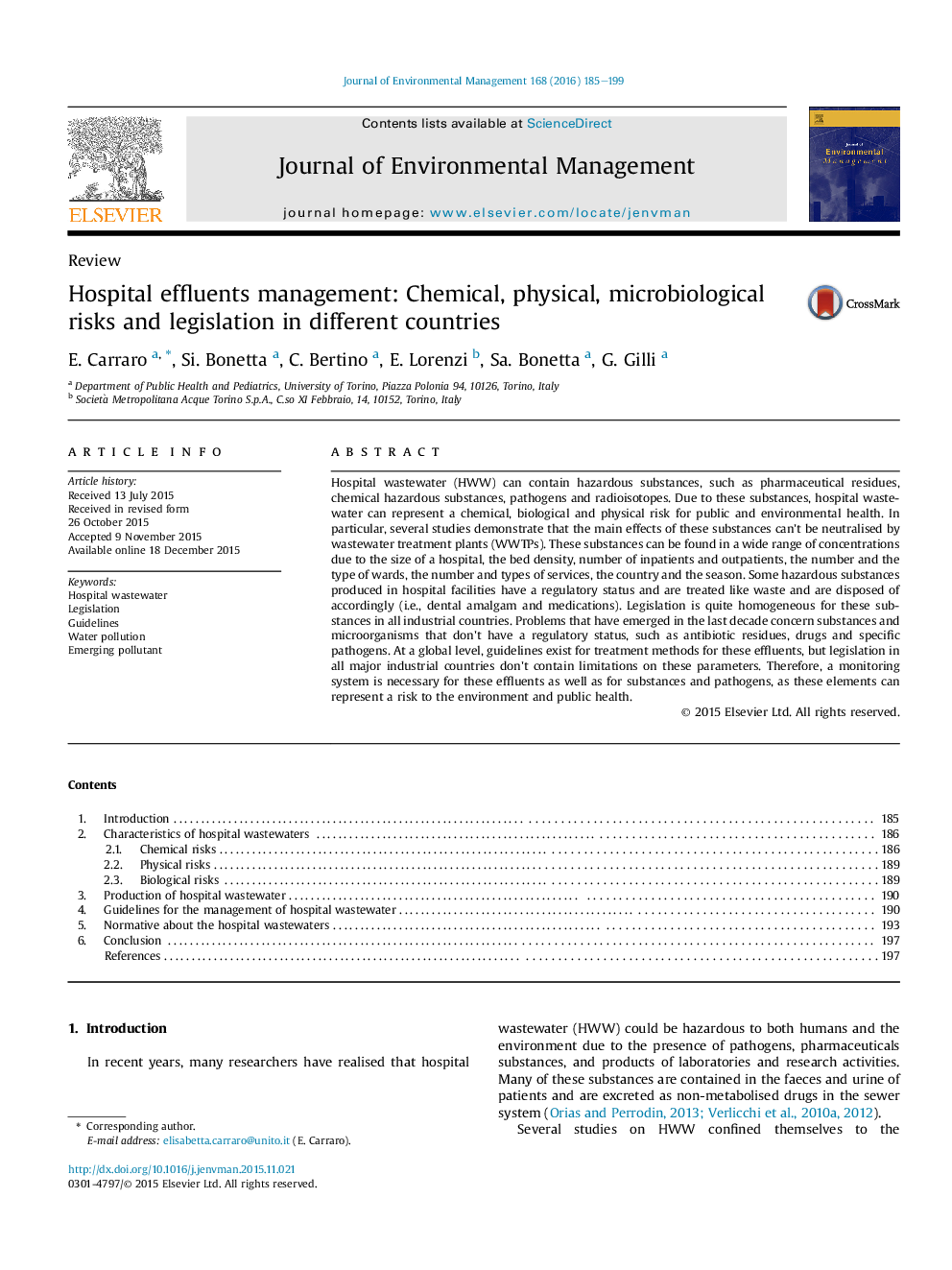| کد مقاله | کد نشریه | سال انتشار | مقاله انگلیسی | نسخه تمام متن |
|---|---|---|---|---|
| 1055558 | 1485244 | 2016 | 15 صفحه PDF | دانلود رایگان |
• A lack of information about the risk management of hospital effluents was observed.
• Chemical, biological and physical risks can be present in hospital wastewater.
• Emerging problems (e.g., antibiotics, pathogens) do not have a regulatory status.
• A more detailed monitoring of hazards is appropriate.
Hospital wastewater (HWW) can contain hazardous substances, such as pharmaceutical residues, chemical hazardous substances, pathogens and radioisotopes. Due to these substances, hospital wastewater can represent a chemical, biological and physical risk for public and environmental health. In particular, several studies demonstrate that the main effects of these substances can't be neutralised by wastewater treatment plants (WWTPs). These substances can be found in a wide range of concentrations due to the size of a hospital, the bed density, number of inpatients and outpatients, the number and the type of wards, the number and types of services, the country and the season. Some hazardous substances produced in hospital facilities have a regulatory status and are treated like waste and are disposed of accordingly (i.e., dental amalgam and medications). Legislation is quite homogeneous for these substances in all industrial countries. Problems that have emerged in the last decade concern substances and microorganisms that don't have a regulatory status, such as antibiotic residues, drugs and specific pathogens. At a global level, guidelines exist for treatment methods for these effluents, but legislation in all major industrial countries don't contain limitations on these parameters. Therefore, a monitoring system is necessary for these effluents as well as for substances and pathogens, as these elements can represent a risk to the environment and public health.
Figure optionsDownload as PowerPoint slide
Journal: Journal of Environmental Management - Volume 168, 1 March 2016, Pages 185–199
